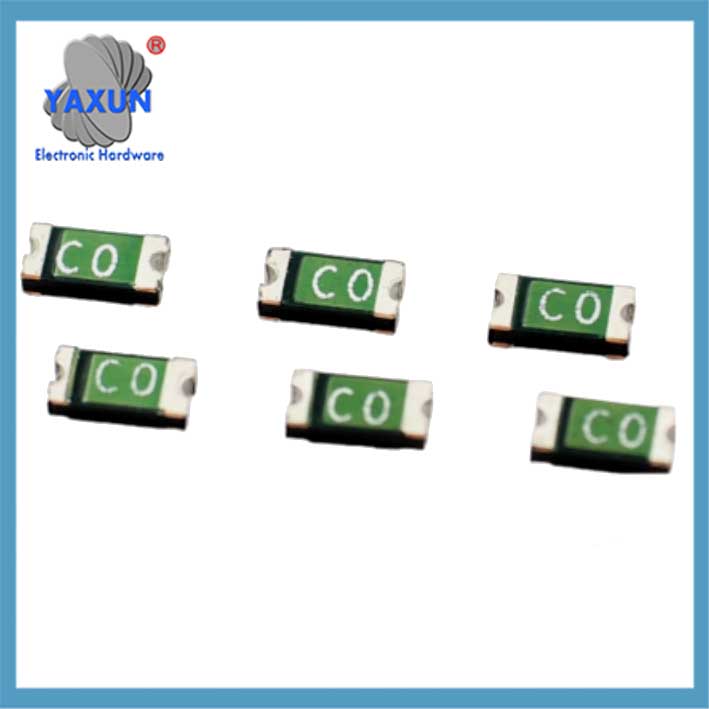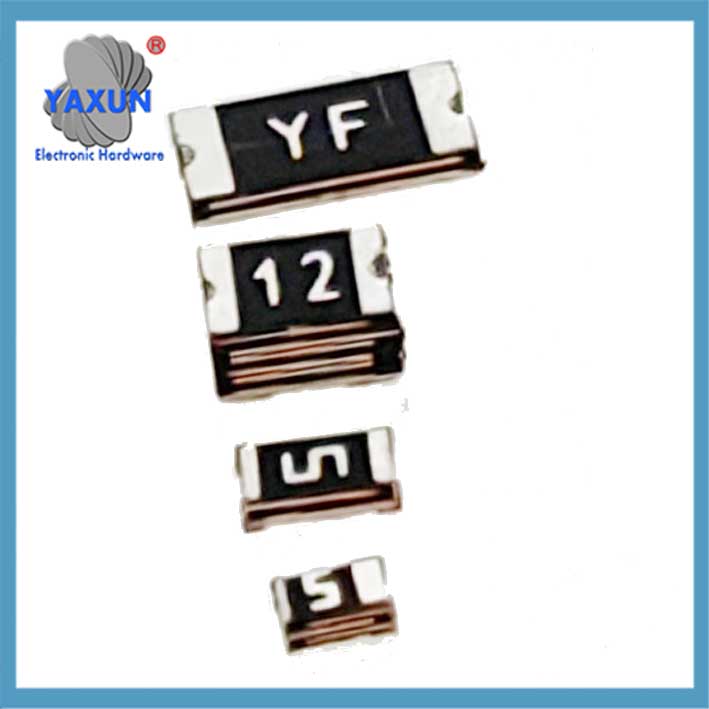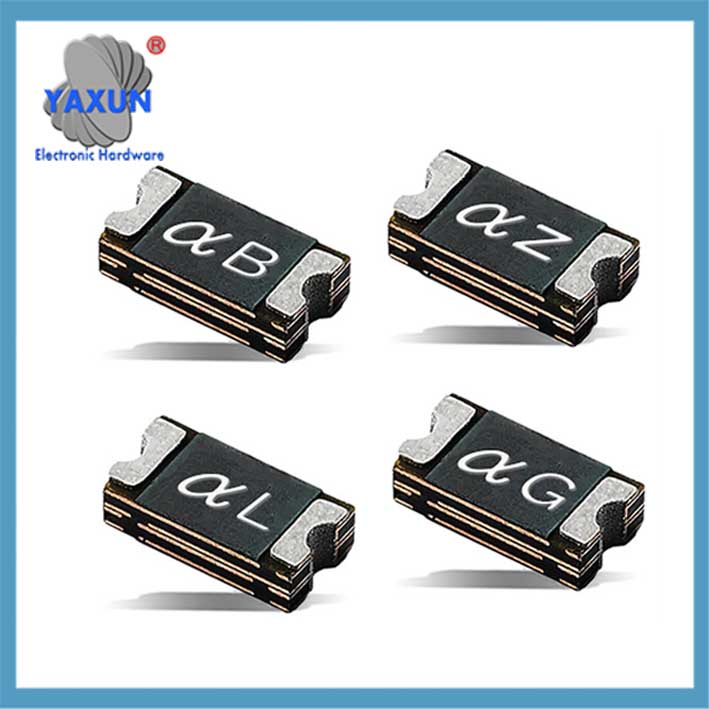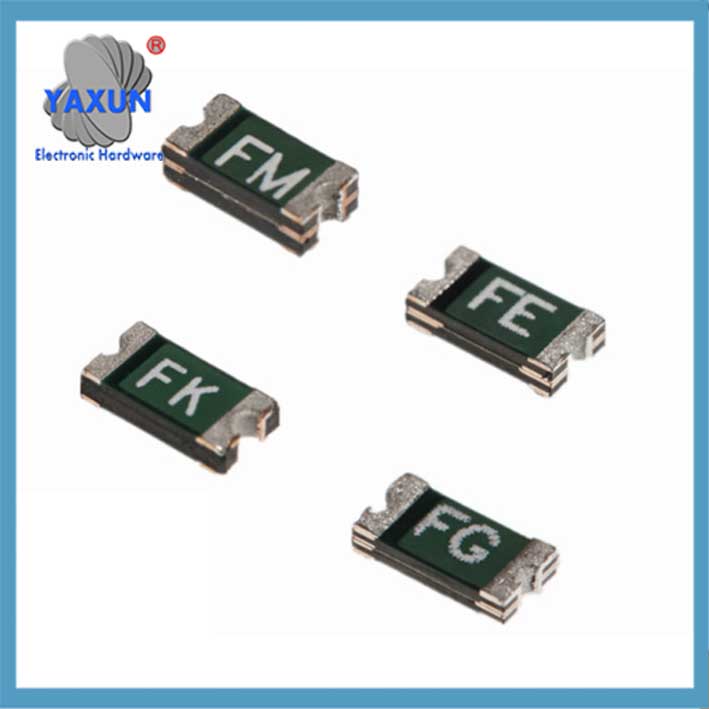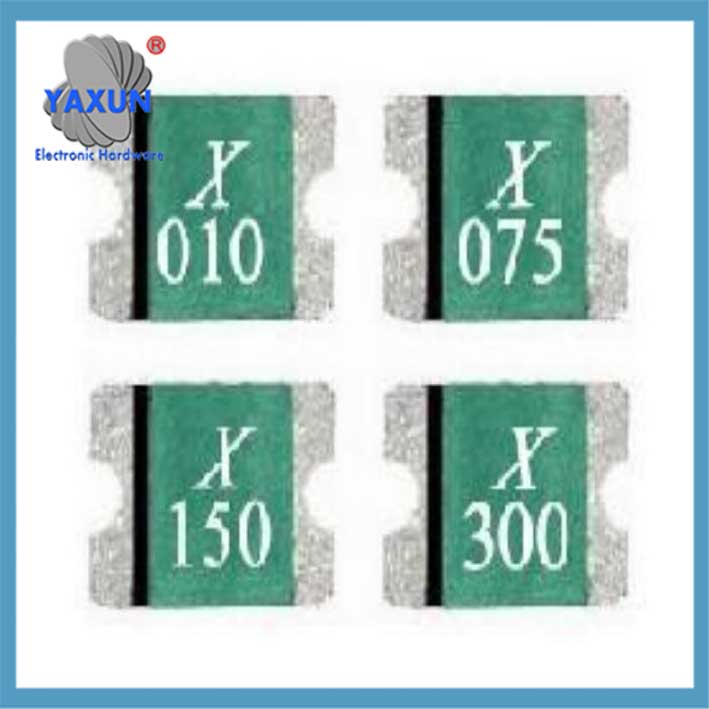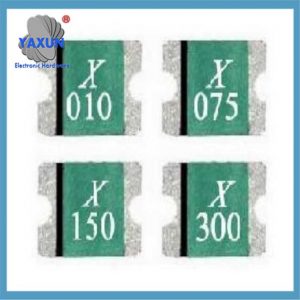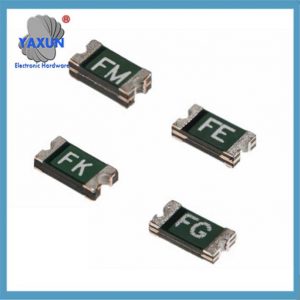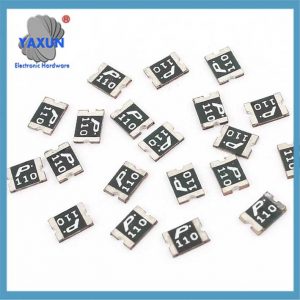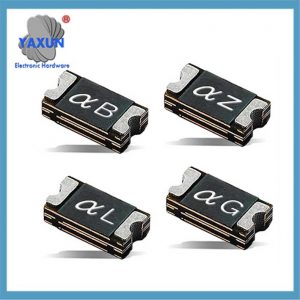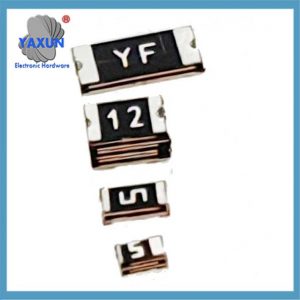Categorias de Produtos
- fusível térmico 32
- fusíveis de montagem em superfície 12
- termistor 36
- Suporte de fusível para montagem em PCB 27
- Chicote de fiação 6
- Porta-fusíveis de lâmina 17
- termostato 50
- Fusível elétrico 24
- Sensor de temperatura automotiva 7
- Disjuntor térmico 22
- Porta-caixa de fusíveis 36
- Sensor de temperatura 75
- Interruptor térmico 68
- Fusível do carro 20
- Fusíveis aparafusados 8
Etiquetas de produto
Funções e aplicações de fusíveis de chips reastáveis
Fusíveis de chip reinicializáveis, também conhecido como PTC (Coeficiente de temperatura positivo) fusíveis reinicializáveis ou PPTC (Coeficiente de temperatura positiva polimérica) dispositivos, são componentes de proteção de circuito que são redefinidos automaticamente após uma condição de falha ser eliminada. Eles protegem contra situações de sobrecorrente e temperatura excessiva, oferecendo uma solução de reinicialização automática que aumenta a confiabilidade e reduz o tempo de inatividade em diversas aplicações.
Fusíveis de chip reinicializáveis (Pptc) são componentes de proteção contra sobrecorrente baseados nas características positivas do coeficiente de temperatura dos polímeros. Eles têm uma função de reinicialização automática e são amplamente utilizados na proteção de circuitos de equipamentos eletrônicos.. A seguir estão seus pontos principais:
1. Estrutura e princípio de trabalho
Composition Material Composition
É composto por resinas poliméricas especialmente tratadas (como polímeros PE) e partículas condutivas (partículas de preto ou metal de carbono). Em condições normais, As partículas condutivas formam um caminho de baixa resistência (0.1-vários ohms). Mecanismo de proteção
Quando a sobrecorrente ocorre, O efeito térmico da corrente faz com que a resina derrete e expanda, a rede condutora para quebrar, e a resistência aumenta repentinamente para um estado de alta resistência (até megohms), limitando a corrente a microamperes. Depois que a falha for resolvida, as partículas condutoras esfriam e encolhem, reconectar, e restaurar o estado de baixa resistência sem substituição manual.
Proteção de sobrecorrente:
Fusíveis reinicializáveis limitam o fluxo excessivo de corrente em um circuito, evitando danos a componentes sensíveis durante curtos-circuitos ou condições de sobrecarga.
Proteção contra superaquecimento:
Eles também podem sentir e responder a temperaturas excessivas, tropeçando para um estado de alta resistência para evitar superaquecimento e danos potenciais.
Auto-retenção:
Ao contrário dos fusíveis tradicionais, fusíveis reinicializáveis retornam automaticamente ao seu estado de baixa resistência assim que a condição de falha é removida e a temperatura ou corrente cai abaixo do ponto de disparo.
2. Parâmetros e características principais
| Parâmetros | Descrição |
|---|---|
| Mantendo a corrente | Corrente máxima para manter a não ação (E.G.. 0.05-3Um para 0805 pacote) |
| Atualidade de ação | Corrente mínima em estado estacionário para acionar a proteção (geralmente 2 vezes a corrente de retenção) |
| Tensão suportável | Valor típico 16-60V, o valor da tensão suportável diminuirá em alta temperatura |
| Tempo de resposta | A sobrecarga pode ser acionada em milissegundos, que está relacionado ao múltiplo de sobrecarga de corrente |
3. Cenários típicos de aplicação
Eletrônicos de consumo:
Amplamente utilizado em smartphones, notebooks, Televisores, e outros dispositivos eletrônicos para proteção contra sobrecorrentes e problemas de temperatura excessiva.
Fontes de alimentação:
Fornece proteção confiável para fontes de alimentação em vários dispositivos e sistemas, evitando danos causados por curtos-circuitos ou consumo excessivo de corrente.
Eletrônica Automotiva:
Usado em carros para proteger a eletrônica do painel, módulos de controle, e sistemas de entretenimento contra sobrecorrentes.
Telecomunicações:
Protege roteadores, comuta, e outros dispositivos de comunicação contra danos causados por sobrecorrentes, garantindo conectividade ininterrupta.
Sistemas de Controle Industrial:
Proteja os painéis de controle eletrônico, CLPs (Controladores lógicos programáveis), e outros componentes críticos em ambientes industriais.
Aplicações Aeroespaciais e Nucleares:
Fornece proteção confiável em ambientes onde a substituição de fusíveis é difícil ou impraticável.
Dispositivos Médicos:
Pode ser encontrado em alguns dispositivos médicos, garantindo a segurança e a confiabilidade de equipamentos médicos críticos.
Sistemas de áudio:
Protege alto-falantes, especialmente tweeters, de danos devido a overdrive.
4. Considerações de seleção
Matching de corrente: A corrente de manutenção deve ser 1.25 vezes maior que a corrente operacional máxima do circuito;
Seleção de pacote: Selecione 0402/0603 e outros tamanhos de acordo com o espaço PCB, e 1812/2920 a embalagem é necessária para cenários de alta corrente;
Adaptabilidade ambiental : O uso atual precisa ser reduzido em ambientes de alta temperatura para evitar falsos acionamentos.
5. Tendências de desenvolvimento tecnológico
Otimização de materiais: Novos materiais nanocompósitos melhoram a velocidade de resposta e a resistência à pressão.
Inovação estrutural: Por exemplo, Eletrônica YAXUN’ componentes de patch ajustáveis são adequados para diferentes layouts de circuito.
Se você precisar de um padrão de teste, você pode consultar o ambiente de 25°C para verificar a corrente de manutenção (nenhuma ação para 15 minutos) e ação atual (gatilho dentro 5 minutos) e outros indicadores.
Vantagens sobre os fusíveis tradicionais:
Auto-retenção:
Elimina a necessidade de substituição manual de fusíveis, reduzindo o tempo de inatividade e os custos de manutenção.
Tamanho compacto:
Os fusíveis reinicializáveis costumam ser menores que os fusíveis tradicionais, tornando-os mais fáceis de integrar em dispositivos eletrônicos compactos.
Vida útil mais longa:
Capaz de suportar numerosos eventos de sobrecorrente, levando a uma vida útil geral mais longa em comparação com fusíveis tradicionais.
Sem arco:
Fusíveis reinicializáveis não produzem faíscas ou arcos durante uma falha, aumentando a segurança.
Contate-nos
Aguardando seu e-mail, responderemos dentro de 12 horas com informações valiosas que você precisava.
 English
English Afrikaans
Afrikaans العربية
العربية বাংলা
বাংলা bosanski jezik
bosanski jezik Български
Български Català
Català 粤语
粤语 中文(简体)
中文(简体) 中文(漢字)
中文(漢字) Hrvatski
Hrvatski Čeština
Čeština Nederlands
Nederlands Eesti keel
Eesti keel Suomi
Suomi Français
Français Deutsch
Deutsch Ελληνικά
Ελληνικά हिन्दी; हिंदी
हिन्दी; हिंदी Magyar
Magyar Bahasa Indonesia
Bahasa Indonesia Italiano
Italiano 日本語
日本語 한국어
한국어 Latviešu valoda
Latviešu valoda Lietuvių kalba
Lietuvių kalba македонски јазик
македонски јазик Bahasa Melayu
Bahasa Melayu Norsk
Norsk پارسی
پارسی Polski
Polski Português
Português Română
Română Русский
Русский Cрпски језик
Cрпски језик Slovenčina
Slovenčina Slovenščina
Slovenščina Español
Español Svenska
Svenska ภาษาไทย
ภาษาไทย Türkçe
Türkçe Українська
Українська اردو
اردو Tiếng Việt
Tiếng Việt
